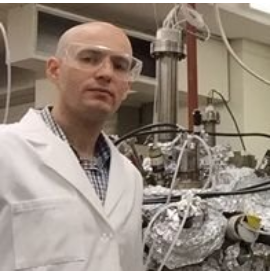
Tue Nov 19 CNRE Seminar: Dr. Daniel B. Gopman, Ultrathin Magnetic Films for Future Nanoelectronics
CNRE Research Seminar Series
The seminar series will offer a great opportunity for participants to learn about ongoing research within SEAS and network with experts to foster professional growth of CNRE affiliates. CNRE invites you to broaden the knowledge base, discuss emerging topics and provide feedback on current research. Future topics include emerging research on Nanotechnology, Additive Manufacturing and Energy.
All research seminars are FREE and open to the public. Refreshments will be provided and all are welcome to join these interactive sessions!
Event
Tuesday, November 19, 2019
12:00pm -1:00pm
Building 42, Room A06
Ultrathin Magnetic Films for Future Nanoelectronics
Daniel B. Gopman, PhD, National Institute of Standards and Technology

Daniel B. Gopman, PhD Scientist in the Materials Science and Engineering Division, National Institute of Standards and Technology daniel.gopman@nist.gov
Nanoscale ferromagnetic films hold significant promise for a range of emerging technologies, ranging from memory cells for non-volatile random access memories to stochasic computing elements for fast and energy-efficient pattern recognition systems. Common among these applications are a storage ferromagnetic layer with a well-defined anisotropy axis; a second magnetic layer (or layers) with a fixed magnetization orientation; an oxide tunneling barrier separating the magnetic layers and facilitating discrimination of the relative magnetic layer orientations (tunneling magnetoresistance); and a method for changing the orientation of the storage layer that is both low-energy and local (e.g. would not disturb an adjacent device on a dense chip array). These criteria can occasionally be at odds with one another, requiring judicious co-optimization of these heterogeneous layered films for functional properties.
At the Materials Science and Engineering Division of the National Institute of Standards and Technology, our team is focused on the best practices synthesis and characterization of thin film heterostructures for magnetic devices. We deliver precision measurements of the magnetic anisotropy strength, the spectroscopic g-factor splitting and the magnetic dissipation (Gilbert damping) using a NIST-built broadband ferromagnetic resonance spectrometer that can simultaneously probe the properties of each ferromagnetic layer in a magnetic memory structure, with sensitivity down to sub-nm thick Co-Fe-B alloy films. We additionally carry out magneto-optic imaging of a range of prototype magnetic memory microstructures, including magnetic microrings and spin orbit torque devices, to understand magnetization reversal behavior in real time. Finally, we employ physical vapor deposition at our magnetic engineering research facility to produce magnetic multilayers in an ultrahigh vacuum (base pressure < 4×10-8 Pa) environment with the flexibility to choose from up to 13 different metal and insulating sputtering targets without breaking vacuum. These capabilities are broadly available to accelerate our understanding of prototypes and processing details to support the domestic microelectronics industry and our colleagues in academia. Opportunities for student engagement are available and will be discussed briefly.
BIOGRAPHY
Daniel B. Gopman, PhD, is a staff scientist in the Materials Science and Engineering Division at the National Institute of Standards and Technology. He earned his PhD in Physics from New York University, where he performed research on the switching properties of nanostructured spintronic devices. Dr. Gopman joined NIST in 2014 on a NRC postdoctoral fellowship to develop multiferroic heterostructures combining magnetic thin films with piezoelectric actuators. His current research focuses on the development of novel magnetic devices for more effective control of magnetism at the nanoscale. Dr. Gopman is a co-organizer of the US Government Working Group on Magnetic Tunnel Junction technologies and a member of the American Physical Society, the IEEE Magnetics Society and the Materials Research Society.
Opportunities for student engagement in National Institute of Standards and Technology are available and will be discussed briefly in this Research Seminar.
Seminar Series Managing Director
Dr. Hongmei Dang
hongmei.dang@udc.edu
202.274.5836